After our day at the Prado we had two days of travel to two of the most beautiful cities in Spain. Segovia and Toledo are both picturesque cities built on hills. They also have the same signature dishes of suckling pig and suckling lamb. It was like the mothership was calling us home.
First on the docket was Segovia, which is a quick forty-five minute journey by high-speed train. This display in the Segovia train station cafe demonstrates just how serious this town is about their pig products. We knew we were in for a great day.

Segovia's most famous monument is this Roman aqueduct, which was still in operation until the late 1800s! It no longer delivers water, but it is an absolutely amazing sight.
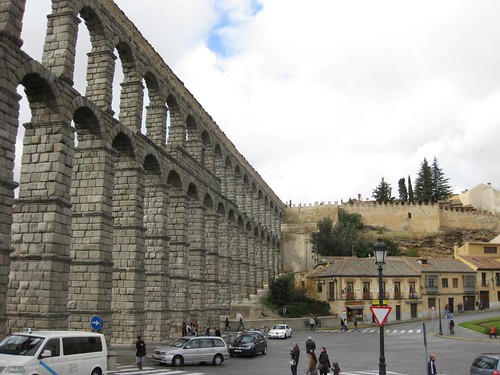
After taking in the Roman aqueduct we visited the Cathedral and the Archeological Museum. I was really impressed with the depth of the collection and the way in which it laid out the history of the town. Check out these Visigothic belt buckles. Eat your heart out, cowboys.
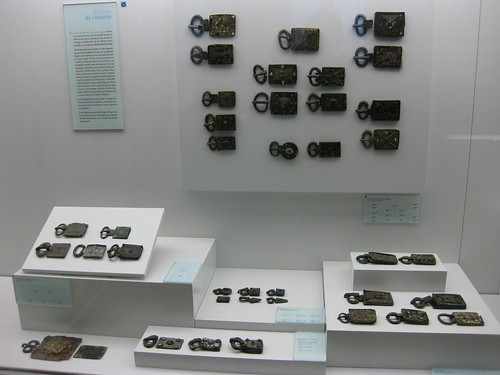
By the time we got out it was raining, so we hit one Romanesque church and decided to go to lunch. Cochinillo is roast suckling pig, fed for twenty-one days on mother's milk. We managed to find a place full of locals in the front bar, but had the entire dining room to ourselves. This might have been the best meal on the trip. You can check the entire meal out, details of the Visigothic belt buckles, and an articulated Jesus sculpture on my flickr page.
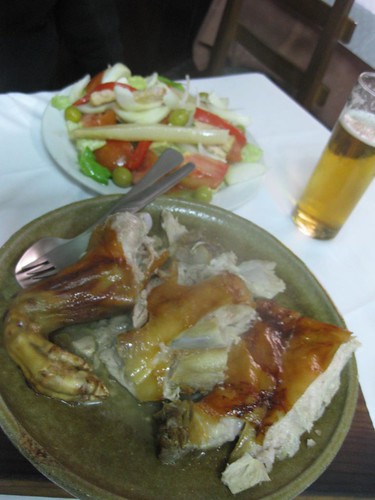
After lunch we were in food bliss, and the sky was cloudy but without rain. We visited the town's Alcazar, and then decided to take a hike around the base of the hill to a church outside of town that was home to the Knights of Malta. The Iglesia Vera Cruz is a really unique octagonal structure, with a sequestered meeting room raised and in the center of the building. It has a few fragments of medieval fresco, and this breathtaking view of the town.
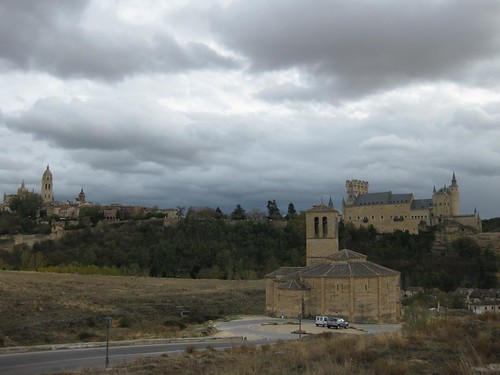
The next day we took a second high-speed train trip, this time to Toledo. Toledo is considered a Spanish national treasure because it is so well preserved. It was the main cultural and political capital of Spain until Phillip II moved the capital to Madrid in the early 1500s. It's really rare that a city would have major construction through the Renaissance, and then not have much modernization or be a target during war times. Toledo is just such a treasure, and to make it even better, no new or modern facades have been allowed in the old city, so you get a feel for what it must have been like when it ceased being the capital.
Everything in Segovia had gone right as planned, so it was only fitting that the next day should not. We walked from site to site finding that they were closed for restoration, or even closed with no posted notice. Iglesia Santiago del Arabel, El Greco's House, Santo Tome, and Museo Santa Cruz with its 15 El Grecos were all closed during hours they would normally be available. The good news is that we had very few people with us in the Cathedral (which has a painting collection like a mini-Prado), and the pay portion of San Tome containing El Greco's The Burial of Count Orgaz was open. We were also able to enter the only surviving Mosque, the Mezquita del Cristo de la Luz. As you can see, it is another example of Mudejar design reconsecrated as a Catholic church. It also has Roman excavations underneath.

We decided that our suckling pig experience had been so fantastic, that to do it again would be asking for disappointment. Instead we decided to try the other regional specialties of partridge and suckling lamb.
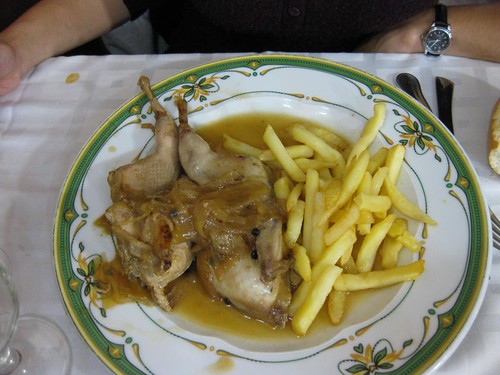
Notice the fries? They are hugely popular in Europe, but are called fried potatoes rather than french fries. Don't expect ketchup, though. Vinegar and mayonnaise are your most likely condiments. I guess no cuisine is perfect.

The overall experience was very good in Toledo, but we felt like we only got a partial glimpse.
I guess we'll just have to go back later. Our odd luck held up into the next day. It turned out that Monday was Madrid's day to celebrate their patron Saint, Almudena. It was certainly exciting, with public gatherings in every public square, but it meant that the Royal Palace and Museo Reina Sofia were closed. This meant we needed to cram the Royal Palace into our last day, and that we would miss Reina Sofia and Picasso's Guernica. Ouch! On a positive note we were now free to visit the Museo Lazaro Galdiano, which has some of my favorite Goyas and a Bosch. Pictured below is Plaza Mayor before the festivities.

Our last day in Madrid had us exploring both of the royal palaces in the region. Our first site was El Escorial, a Baroque monastery in the mountains that has been the burial place of Spanish royalty for the last four hundred years. It was cold, both in temperature and design, and beautiful in its austerity. I highly suggest you visit if you ever get the chance. Phillip II did not have great taste in art, but you'll find it there despite him anyway. Go to experience the mood of the Spanish Empire at its moment of greatest strength. A word of advice--buy the audio guide. We didn't listen to much of it, but knew that you needed to buy it or join a group tour to enter the royal burial chamber.

We were able to get onto our best case scenario bus, and so we knew we would be able to relax and enjoy the rest of the day without hurrying. Our next stop was the Royal Palace. Where El Escorial was unadorned and severe, the Royal Palace is Rococo and opulently decorated. It is the current residence of Spanish royalty, so you only get to tour part of the palace. For us the best part of the experience were the Tiepolo ceilings. Never forget to look up!
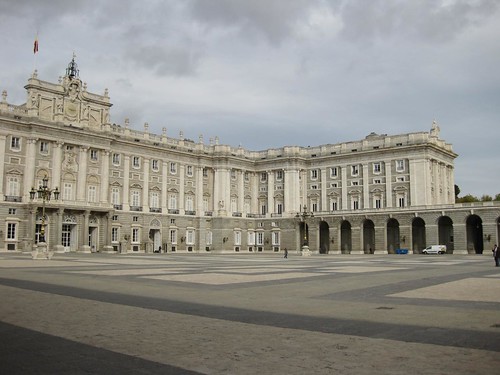
Our last visit was to the Museo Thyssen Bornemisza. Right next to the Prado, this museum offers lesser-known masterworks throughout the history of Europe. We managed to get in one last Caravaggio, and I was thrilled to get a close look at three very famous Lucian Freud pieces. Successful and content in our last day, we grabbed some doner kabobs and headed back to the room to pack. It's now four days later, and my body is still confused. I was wide awake at 5:30 am this morning, with no pressing engagements until the afternoon. One last word of advice, always plan a little vacation to recuperate after your vacation.
So to the few, the proud, the readers of this blog, thanks for hanging with me through the journey. In the weeks to come I will keep you apprised of the artwork I will be creating over my sabbatical, as well as catching up on the items I missed before I left.
No comments:
Post a Comment